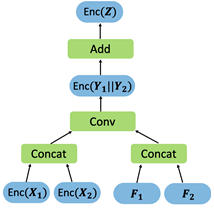Acceleration of homomorphic encryption and design of optimal neural networks...A wide range of services available in the future
As Korea enters Super-aged society and the increase in number of elderly living alone has emerged as a social issue, the need for a health-care system to take care of their health and safety has increased. However, in case of the pre-existing home monitoring service for health care, monitoring is conducted in limited areas due to its privacy concerns.
In amidst of the situation, Hanyang University announced on the August 31st that team of Professor Kim Miran of the Department of Mathematics has developed a security technology that can analyze human behavior without leakage of private information.
To solve the aforementioned problems, professor Kim’s team designed a cloud-based security system that can infer the basic movement and falling actions. Physical features information is encrypted and transmitted to cloud, and behavior is inferred by AI model to output encrypted result for basic movement and falling.
The result value is sent to the health care service provider who can decrypt the code, and the service provider can take actions immediately if heath abnormal action such as falling is detected. This technology can provide reliable smart home monitoring service without privacy leakage, as well as is expected to be adapted in various healthcare service fields henceforth.
The core of this technology is Homomorphic Encryption. Homomorphic encryption is an cryptographic technology that can calculate encrypted data without decryption. This technology is expected to solve privacy issues that occurs in every data industry as a next-generation cryptographic technology. The homomorphic encryption (CKKS scheme) that Pro. Kim's team developed to support computation of real numbers in 2017 is attracting global attention, which is being used in various fields such as statistical analysis, data search, and machine learning.
Recently Professor Kim’s team conducted a study to safely infer the Convolutional Neural Network that analyzes action recognitions, based on pre-existing homomorphic encryption technology. The core of this technology is to process the computation of parellel Convolution in an encrypted state by saving single instruction in multiple data(SIMD).
This not only enables efficient analyis of large-capacity data, but also optimizes the data storage space. In addition, the research team succeeded in improving the accuracy of the inference by designing a neural network optimized for homomorphic encryption.
Professor Kim said, “Through joint research with Dr. Kristin Lauter (West Coast Head of Research Science at Meta AI Research) and Professor Xiaoqian Jiang (UTHealth), we succeeded in inferring AI models through the encryption of real visual data.” He added, “This technology can be used in various fields of cryptograph technology that is optimized to Convolutional Neural Network algorithm in aspects of processing speed, storage area, and accuracy, which can be applied to various AI fields in the future.”
This study was conducted with the National Research Foundation of Korea’s (NRF) to support outstanding young scientist, which was published in Nature Communications (IF 17.69), an international journal in the multidisciplinary field on last 15th.


Click to see the paper:

